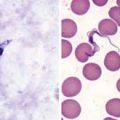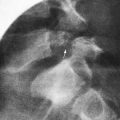Chapter 461 Secondary Polycythemia
Pathogenesis
Secondary polycythemia is diagnosed when true polycythemia is caused by a physiologic process that is not clonal in nature (see Table 461-1![]() on the Nelson Textbook of Pediatrics website at www.expertconsult.com). Secondary polycythemia can be congenital or acquired.
on the Nelson Textbook of Pediatrics website at www.expertconsult.com). Secondary polycythemia can be congenital or acquired.
Table 461-1 DIFFERENTIAL DIAGNOSIS OF POLYCYTHEMIA
PRIMARY
SECONDARY
Congenital
ACQUIRED (NON-CLONAL)
SPURIOUS
Acquired Secondary Polycythemia
Polycythemia may be present in clinical situations associated with chronic arterial oxygen desaturation. Cardiovascular defects involving right-to-left shunts and pulmonary diseases interfering with proper oxygenation are the most common causes of hypoxic polycythemia. Clinical findings usually include cyanosis, hyperemia of the sclerae and mucous membranes, and clubbing of the fingers. As the hematocrit rises to > 65%, clinical manifestations of hyperviscosity, such as headache and hypertension, may require phlebotomy (Chapter 97.3). Living at high altitudes also causes hypoxic polycythemia; the hemoglobin level increases approximately 4% for each rise of 1,000 m in altitude. Partial obstruction of a renal artery rarely results in polycythemia. Polycythemia has also been associated with benign and malignant tumors that secrete erythropoietin. Exogenous or endogenous excess of anabolic steroids also may cause polycythemia.
Congenital Secondary Polycythemia
Subtle decreases in oxygen delivery to tissues may cause polycythemia. Congenital methemoglobinemia resulting from an autosomal recessive deficiency of cytochrome b5 reductase may cause cyanosis and polycythemia (Chapter 456.7). Most affected individuals are asymptomatic. Neurologic abnormalities may be present in patients whose enzyme deficits are not limited to hematopoietic cells. Hemoglobin M disease (autosomal dominant) causes methemoglobinemia and can lead to polycythemia. Cyanosis may occur in the presence of as little as 1.5 g/dL of methemoglobin but is uncommon in other hemoglobin variants unless hyperviscosity results in localized hypoxemia (Chapter 97.3).
Cario H. Childhood polycythemias/erythrocytoses: classification, diagnosis, clinical presentation, and treatment. Ann Hematol. 2005;84:137-145.
Gordeuk VR, Stockton DW, Prichal JT. Congenital polycythemias/erythrocytoses. Haematologica. 2005;90:109-116.
Patnaik MM, Tefferi A. The complete evaluation of erythrocytosis: congenital and acquired. Leukemia. 2009;23:834-844.
Van Maerken T, Hunnick K, Callewaert L, et al. Familial and congenital polycythemias: a diagnostic approach. J Pediatr Hematol Oncol. 2004;26:407-416.





